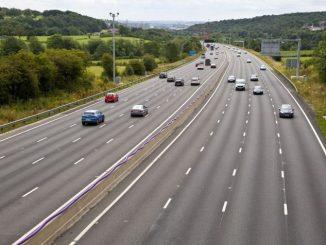
Transport Secretary Grant Shapps has pledged that new motorways that have no hard shoulder - known as All Lane Running (ALR) motorways - will only open if technology is in place to spot stopped or broken-down vehicles quickly.
In addition all existing ALR motorways will have the technology fitted six months earlier than originally planned.
The move is part of wider safety improvements brought in after a series of fatal crashes on motorways where the hard shoulder is converted into a live lane. This strategy is part of Highways England’s Smart Motorway programme which is designed to cut motorway congestion.
It also closely follows the scrapping of Highways England’s Dynamic Hard Shoulder motorways programme in March. These motorways, which convert the hard shoulder to a live lane intermittently, and which were found to confuse motorists, are all being withdrawn and replaced with ALR motorways.
Under the accelerated ALR safety programme, by the end of September 2022, Highways England will bring forward the installation of radar technology on ALR motorways by six months, bring forward by 10 months the upgrade of cameras that can spot motorists driving down closed lanes marked with a ‘red X’ sign, and install around 1,000 additional signs alerting drivers to their nearest emergency lay-by, six months earlier than planned.
Plans to update the Highway Code to provide more guidance about driving on Smart Motorways and ALR motorways will also be brought forward to this year.
The safety measures follow rising public concern at the use of hard shoulders as live lanes. Last year, a BBC investigation found that on one section of the M25, the number of near misses had risen from 72 to 1,485 since the hard shoulder was removed in April 2014.
However, despite these concerns, DfT and Highways England insist that ALR motorways are one of the safest types of road in the country, pointing to data from 2015 to 2019 which shows that drivers on a conventional motorway are 33% more likely to be involved in a fatal accident than drivers on an ALR motorway.
The figures show that in 2018 there were 10 fatalities on ALR motorways. In 2019 there were nine fatalities and a total of 15 fatalities on all motorways without a permanent hard shoulder compared to 11 in 2018.
Read more
- DfT and Highways England threatened with “formal legal action” over smart motorways
- Transport secretary orders safety review of smart motorways
- ‘Go Left’ to avoid smart motorway accidents, urges Highways England
The increase in fatalities in 2019 was accounted for by Dynamic Hard Shoulder motorways, according to the data.
Announcing the accelerated safety measures for ALRs, transport secretary Grant Shapps said: “Despite the data showing that fatalities are less likely on All Lane Running motorways than on conventional ones, this doesn’t mean all drivers necessarily feel safe on them.
He added: “Alongside the raft of measures already undertaken, today I am announcing that all new All Lane Running motorways will open with stopped vehicle detection technology in place, as well as a programme to speed up the roll-out of the technology on previously built stretches of All Lane Running motorways to next year. This will help us further reduce the risk of accidents on the country’s roads.
Highways England's acting chief executive Nick Harris said the organisation will continue to “work with drivers to make increasingly busy motorways safer for everyone who uses them”.
Highways England is also rolling out a range of improved safety measures across the Smart Motorway network, backed by a £500m investment.
This includes the launch of a major Smart Motorway road safety campaign. Emergency areas have also been made more visible and radar technology is being rolled out along sections of ALRs.
Highways England and the police are also targeting motorists who drive along lanes closed by a red X, so they can be caught and prosecuted.
Independent road safety campaigner, Meera Naran’s eight-year-old son Dev died in a Smart Motorway accident on the M6 in 2018 when his grandfather’s car was hit by an HGV after breaking down on a hard shoulder being used as a live lane.
She said: “This is a positive step in the right direction in making our roads safer through the use of available technology.
“I’m determined to ensure there is an ongoing commitment from ministers and executives that we continue to improve road safety and implement all the changes from the action plan.”










